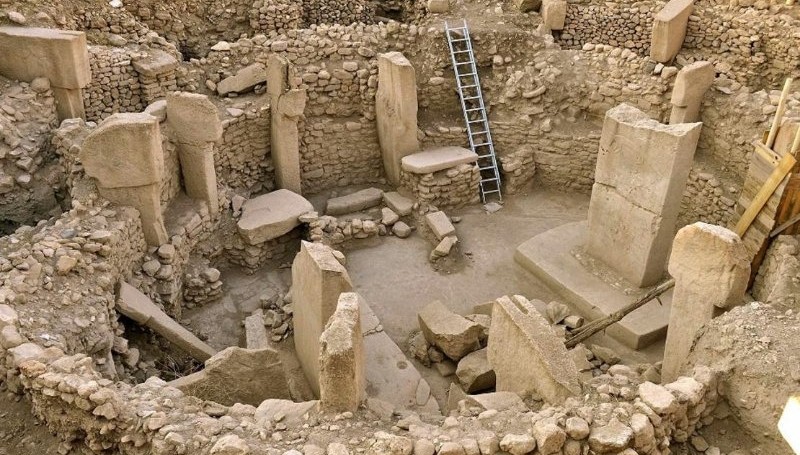2019 the Year of Gobeklitepe
Gobeklitepe is 12 km away from the town of Urfa, known as the city of prophets and it is located on Tek Tek Mountains. The Euphrates and Tigris rivers are the two ancient rivers flowing near Gobeklitepe.
At the time of the construction of the sanctuary on Gobeklite, people lived on hunting and agriculture in other parts of the world. Thus, the exploration of such an extensive temple area built 12,000 years ago is an incredible discovery. It is thought that such monumental structures can be seen only in settled societies, but the emergence of such a monument at that time is a discovery that will cause the re-writing of archeology information.
The site of the Neolithic Age, which is 7500 years old from the pyramids and 7,000 years old from Stonehenge, is still a mystery.
It is still a mystery that the T-shaped stones, which have a height of 6 meters, can weigh up to 60 tons, are erected by whom and for what purpose. Finally, it was not yet determined why all of them were covered by a thick layer of sand. In the Neolithic period, people were considered small communities. However, such a heavy and many stones could only be carried by a large group of people.
German Archaeologist Professor Klaus Schmidt, who made the first excavation work in Gobeklitepe, states that the T-shaped stones are human images because they have hand and fingers. The excavations that started in 1995 show that this place is a collective temple and place of worship. Until that time, people used to paint hunting scenes in caves and draw collective pictures. But for the first time in Gobeklitepe, the animals were embossed and the animals were depicted, which was unique to Gobeklitepe.
According to one view, each animal figure symbolizes the people who visit the temple. On this area there are bull, snake, scorpion, fox, wild boar, wild duck, pike, lion and plant figures. Another finding is that the construction of the temple was made waterproof. According to research, there are 20 temples in the region, but only 6 of them have been brought to light. Again, the oldest ancestor of wheat was found here during the excavations.
So far, agriculture was thought to have put people into settled life, but Gobeklitepe changed this idea. The people settled here to be close to a temple and to worship.
Gobeklitepe was taken to the temporary UNESCO Heritage List in 2011 and was listed on the permanent list in 2018.
The Republic of Turkey has declared 2019 the Year Gobeklitepe have emphasized the importance of the area.
Gobeklitepe Tours from Istanbul or Izmir are available, where many secrets and mysteries remain to be solved. You can visit the world's oldest university, Harran and the Prophet Abraham's Lake Balikli, as well as Göbeklitepe and have a traditional lunch then return to Istanbul or Izmir on the same day.

